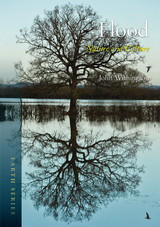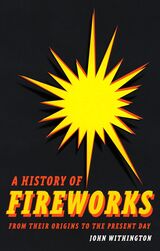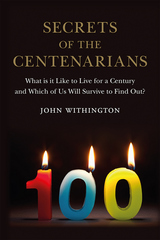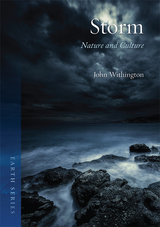5 books about Withington, John

Assassins’ Deeds
A History of Assassination from Ancient Egypt to the Present Day
John Withington
Reaktion Books, 2020
Assassins have been killing the powerful and famous for at least three thousand years. Personal ambition, revenge, and anger have encouraged many to violent deeds, like the Turkish sultan who had nineteen of his brothers strangled or the bodyguards who murdered a dozen Roman emperors. More recently have come new motives like religious and political fanaticism, revolution and liberation, with governments also getting in on the act, while many victims seem to have been surprisingly careless: Abraham Lincoln was killed after letting his bodyguard go for a drink. So, do assassinations work? Drawing on anecdote, historical evidence, and statistical analysis, Assassins’ Deeds delves into some of history’s most notorious acts, unveiling an intriguing cast of characters, ingenious methods of killing, and many unintended consequences.
[more]

Flood
Nature and Culture
John Withington
Reaktion Books, 2013
From the flood that remade the earth in the Old Testament to the 1931 China floods that killed almost four million people, from the broken levees in New Orleans to the almost yearly rising waters of rivers like the Mississippi, floods have many causes: rain, melting ice, storms, tsunamis, failures of dams and levees, acts of vengeful gods. They have been used as deliberate acts of war to cause thousands of casualties. Flooding kills far more people than any other natural disaster. In this cultural and natural history of floods, John Withington tells stories of the deadliest floods the world has seen while also exploring the role of the deluge in religion, mythology, literature, and art.
Withington describes how aspects of floods—the power of nature, human drama, changed landscapes—have fascinated artists, novelists, and filmmakers. He examines the ancient, catastrophic flood that appears in many religions and cultures and considers how the symbol of the flood has become a key icon in world literatures and a component of the contemporary disaster movie. Withington also depicts how humans try to defend themselves against these merciless encroaching waters and discusses the increasing danger floods pose in a future beset by climate change. Filled with illustrations, Flood offers a fascinating overview of our relationship with one of humanity’s oldest and deadliest foes.
[more]

A History of Fireworks from Their Origins to the Present Day
John Withington
Reaktion Books, 2024
Bursting with images from across time, a sparkling chronicle of rockets, pinwheels, and more.
This book illuminates the glittering history of fireworks, from their mysterious beginnings to the dazzling big-budget displays of today. It describes how they enthralled the world’s royal courts and became a sensation across the British Empire. There are stories of innovations like “living fireworks,” fiercely fought international competitions, and the technology behind modern showpieces viewed by millions. Practitioners say fireworks are an art, and they have inspired artists from Shakespeare, Handel, Dickens, and Whistler to Katy Perry. But John Withington also covers fireworks’ practical uses—rescues at sea, attempts to control the weather—while not ignoring their dangers, accidents, or efforts to make them safer.
This book illuminates the glittering history of fireworks, from their mysterious beginnings to the dazzling big-budget displays of today. It describes how they enthralled the world’s royal courts and became a sensation across the British Empire. There are stories of innovations like “living fireworks,” fiercely fought international competitions, and the technology behind modern showpieces viewed by millions. Practitioners say fireworks are an art, and they have inspired artists from Shakespeare, Handel, Dickens, and Whistler to Katy Perry. But John Withington also covers fireworks’ practical uses—rescues at sea, attempts to control the weather—while not ignoring their dangers, accidents, or efforts to make them safer.
[more]

Secrets of the Centenarians
What is it Like to Live for a Century and Which of Us Will Survive to Find Out?
John Withington
Reaktion Books, 2017
In October 1995, a blind, deaf, French grandmother broke a world record. Jeanne Calment became, so far as we know, the oldest human being who has ever lived when she reached the age of 120 years and 238 days. She went on to survive for nearly three more years—dying in 1997 at 122 years and 164 days. On the long journey to her record-breaking age, Madame Calment acquired more and more company. The United States today has more centenarians than any other country, and they are the fastest-growing section of the population, with at least fourteen times as many centenarians as there were sixty years ago. Secrets of the Centenarians delves into the intriguing background of this incredible increase.
In the book, John Withington explores the factors that determine who among us will reach one hundred and who will not. Is it determined by lifestyle or by genetics or by geography? Why do women outnumber men so heavily among centenarians? What kind of life can you expect if you reach one hundred? Is surviving that long a blessing or a curse? Withington answers these questions and more, along the way telling stories of celebrity centenarians like the comedians Bob Hope and George Burns, songwriter Irving Berlin, Rose Fitzgerald Kennedy, Britain’s Queen Mother, and the scientist who invented LSD. Finally, Withington explores whether—even if the number of centenarians keeps increasing—there remains a maximum life span beyond which we cannot survive.
Thoughtful, well-researched, and highly entertaining, Secrets of the Centenarians reveals some of the most intriguing secrets of growing older.
In the book, John Withington explores the factors that determine who among us will reach one hundred and who will not. Is it determined by lifestyle or by genetics or by geography? Why do women outnumber men so heavily among centenarians? What kind of life can you expect if you reach one hundred? Is surviving that long a blessing or a curse? Withington answers these questions and more, along the way telling stories of celebrity centenarians like the comedians Bob Hope and George Burns, songwriter Irving Berlin, Rose Fitzgerald Kennedy, Britain’s Queen Mother, and the scientist who invented LSD. Finally, Withington explores whether—even if the number of centenarians keeps increasing—there remains a maximum life span beyond which we cannot survive.
Thoughtful, well-researched, and highly entertaining, Secrets of the Centenarians reveals some of the most intriguing secrets of growing older.
[more]

Storm
Nature and Culture
John Withington
Reaktion Books, 2016
Gales, cyclones, blizzards, tornados, and hurricanes—few things demonstrate the awesome power of nature like a good storm. Devastating, diverse, and sometimes appearing completely out of nowhere, storms are also a source of both scientific and aesthetic wonder. In this book, John Withington takes an in-depth and unique look at the nature of storms and the impact that they have—both physical and cultural—on our lives.
Withington shows how storms have changed the course of human history. From Roman times to the modern day, he shows how their devastating effects have wiped out entire communities, changed the fates of battle, and even reset the entire planet. He also shows how beneficial they have been to us: as an important feature of our atmosphere and climate, but also as a source of inspiration for nearly every artist who has ever lived, from Homer to Rembrandt, in works from the Old Testament to Robinson Crusoe. Beautifully illustrated, this book offers a fascinating look at Earth’s most fearsome events.
Withington shows how storms have changed the course of human history. From Roman times to the modern day, he shows how their devastating effects have wiped out entire communities, changed the fates of battle, and even reset the entire planet. He also shows how beneficial they have been to us: as an important feature of our atmosphere and climate, but also as a source of inspiration for nearly every artist who has ever lived, from Homer to Rembrandt, in works from the Old Testament to Robinson Crusoe. Beautifully illustrated, this book offers a fascinating look at Earth’s most fearsome events.
[more]
READERS
Browse our collection.
PUBLISHERS
See BiblioVault's publisher services.
STUDENT SERVICES
Files for college accessibility offices.
UChicago Accessibility Resources
home | accessibility | search | about | contact us
BiblioVault ® 2001 - 2024
The University of Chicago Press









